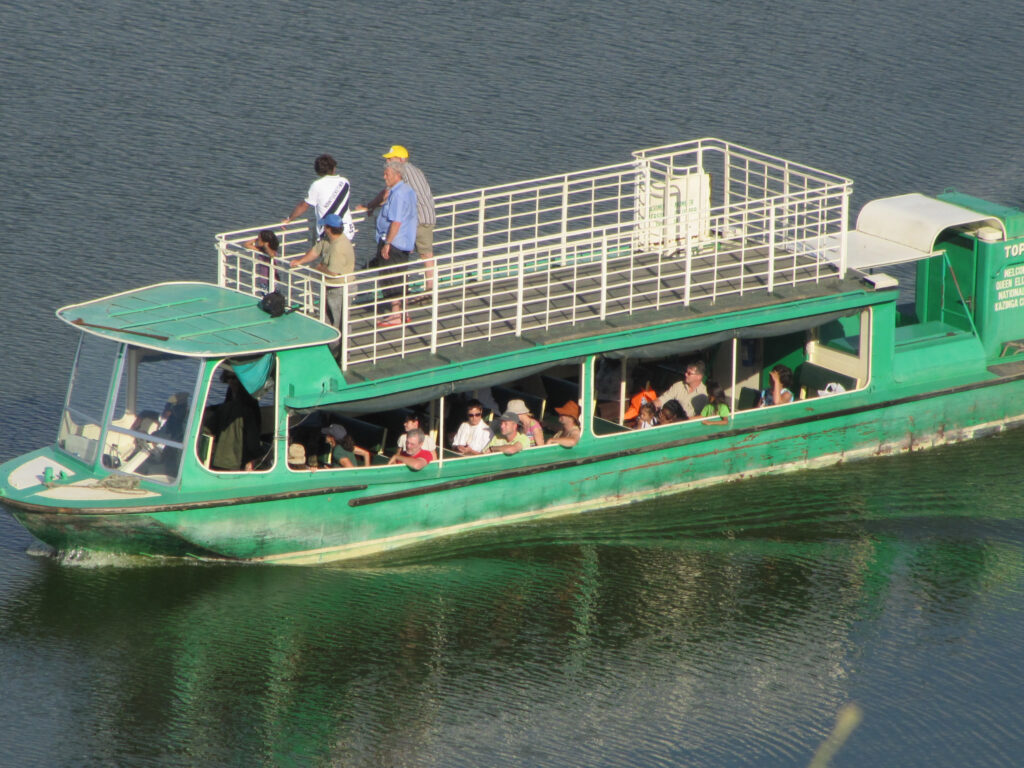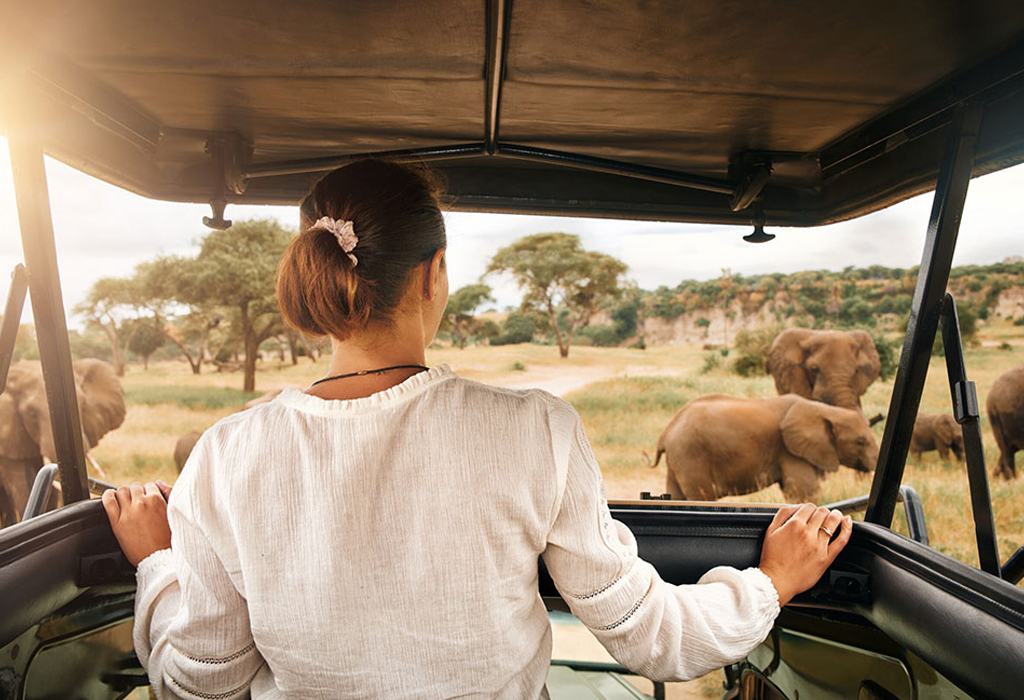
The Kazinga Channel Boat Cruise in Uganda
The Kazinga Channel Boat Cruise in Uganda
The Kazinga Channel in Uganda ranks among the most impressive features of Queen Elizabeth National Park. This narrow waterway connects the smaller Lake George to the larger Lake Edward. Streams originating from the Rwenzori Mountains feed Lake George, and its waters then flow through the Kazinga Channel into Lake Edward.
Stretching 32 km, the Kazinga Channel hosts a remarkable concentration of birds, crocodiles, and hippopotamuses. Most of the park’s major mammals gather along the channel’s shores to bathe, drink, and feed, making it an excellent spot for animal viewing. With an estimated population of around 1,600 hippos, the Kazinga Channel and Queen Elizabeth National Park boast one of the three largest hippo populations in the world. Even if you have seen hippos elsewhere, their sheer numbers here will amaze you.
In addition to hippos, visitors can easily spot Nile crocodiles, buffaloes, elephants, monitor lizards, and various antelope species along the channel’s banks. During your cruise, you may even glimpse lions or leopards drinking by the water. Furthermore, the Kazinga Channel ranks as one of Uganda’s top birding spots, with over 58 species recorded. These include the African Shoebill, African Skimmers, Black Bee-eaters, Black Crake, Crested Crane, Darters, Great and Long-tailed Cormorants, Great White and Pink-backed Pelicans, Jacana, Marabou Stork, Open-billed Stork, Saddle-billed Stork, and Yellow-billed Stork.
Thanks to this rich diversity of wildlife, a boat cruise along the Kazinga Channel has become one of the most popular activities in Queen Elizabeth National Park. In fact, it has helped the park earn its status as Uganda’s most visited national park.
Kazinga Channel Boat Cruise Experience
A boat cruise along the Kazinga Channel offers one of the most memorable wildlife experiences during a safari in Queen Elizabeth National Park. Tourists can fully immerse themselves in the channel’s unique ecosystem, observing animals as they drink, feed, and bathe along the banks. Since 1952, slow boat cruises have allowed visitors to enjoy this remarkable spectacle.
The cruise costs approximately $30 and operates in shifts from 9:00 am to 5:00 pm. Each trip lasts about two hours and departs from a landing site near Mweya. Visitors can choose between two boat options: a smaller, more expensive private boat or a larger double-decker boat operated by park authorities. The smaller boat offers greater comfort and is ideal for travelers seeking a private experience.
During the cruise, you will also pass by local fishing villages. In the late afternoon, fishermen prepare their gear before heading out at night. Early afternoons see no fishermen on the water due to the presence of dangerous hippos. However, once night falls, hippos graze ashore, allowing fishermen to fish safely.
Best Time to Visit the Kazinga Channel
The dry season provides the best opportunity to visit the Kazinga Channel. During this time, the waterway becomes an oasis for wildlife, attracting both wild and domestic animals that depend on the channel to drink, cool off, and feed. Photographers should bring a good camera, as the late afternoon offers optimal lighting conditions for capturing the stunning wildlife and scenery.
Other Safari Activities in Queen Elizabeth National Park
Visitors can enhance their experience by combining the boat cruise with game drives in other parts of the park. For example, the Kasenyi Plains provide breathtaking views and host buffaloes, elephants, and Uganda kobs, which, in turn, attract predators such as lions. The Ishasha sector in the south is famous for its tree-climbing lions.
For those seeking a more immersive experience, lion tracking in the Kasenyi sector allows visitors to follow collared lions with the guidance of park researchers, offering an unforgettable encounter with these majestic predators.
Arranging the Kazinga Channel Boat Cruise
Tourists can register for activities such as game drives, chimpanzee tracking in Kyambura Gorge, and boat cruises at the park offices. It is important to select your preferred shift in advance to secure a seat.
Most visitors arrange their safari through a local tour operator, who handles transportation, accommodation, and activity bookings. Before departing for the cruise, guides lead tourists to the landing site and assign seats. Once everyone is on board, the captain, crew, and guides are introduced, and the two-hour journey begins.
Throughout the cruise, guides provide valuable insights, answering questions and sharing information about the park, its wildlife, and its bird species. By the end of the trip, visitors return to the landing site with unforgettable memories and a deeper appreciation for the Kazinga Channel’s extraordinary ecosystem.

